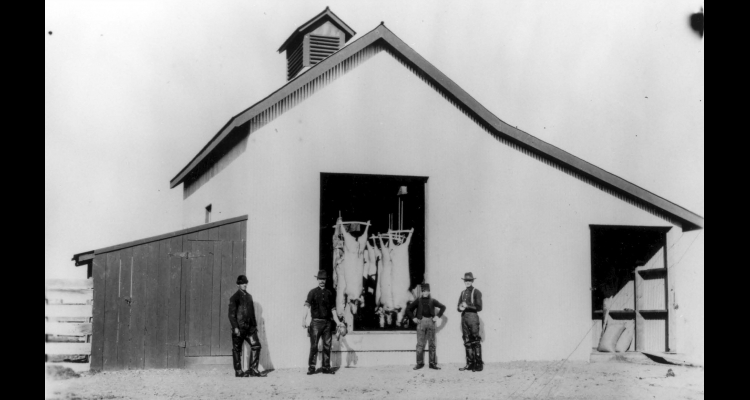Grace Melissa Dangberg: An Oral History
Grace Melissa Dangberg: A Contribution to a Survey of Life in Carson Valley from First Settlement through the 1950s
Interviewee: Grace Melissa Dangberg
Interviewed: 1984
Published: 1984
Interviewer: R. T. King
UNOHP Catalog #110
When Heinrich Friedrich Dangberg settled in Carson Valley in 1856 he was among a mere handful of people residing there who were engaged in commerce or agriculture. The valley first had been entered by a white man in 1848. In the intervening years its prehistoric qualities had been but little altered. The principal occupants of this fertile, well watered area remained Washoe Indians and the plentiful game that they hunted.
Dangberg established himself between the east and west forks of the Carson River and set about improving the land and building a ranch. Ten years later he married Margaret Ferris, who had come with her family from Illinois in 1864. The Dangbergs prospered and multiplied. By the early twentieth century, their H. F. Dangberg Land and Livestock Company was the largest landowner in Carson Valley and it was involved in diverse enterprises, some of them unrelated to ranching or agriculture.
Grace Dangberg was born in 1896, the first child of H. F. Dangberg’s second surviving son, John. Miss Dangberg’s childhood was spent on family ranches and in the nascent community of Minden. She is a graduate of the University of California, where she studied under A. L. Kroeber and Robert Lowie; during a postgraduate year at Columbia she worked with Lowie and with Franz Boas. Upon returning to Carson Valley, Miss Dangberg used her anthropological training and wrote a linguistic and cultural study of the Washoe Indians: “Washo Texts” (University of California Publications in American Archaeology and Ethnology, 1927).
Grace Dangberg developed an interest in the history of Carson Valley and in the history of the Dangberg family. She was one of the founders of the Carson Valley Historical Society, and she wrote or edited a number of works relating to the history of the area. Among her many publications are “Washo Tales” (1968), Carson Valley (1972), and Conflict on the Carson (1975).
In this 1984 interview Grace Dangberg draws upon personal observations and accounts handed down through her family as she addresses several topics that are important in the history of Carson Valley. Of particular interest are her discussions of Washoe Indians, water rights litigation, and the role of the Dangberg family in the creation of Minden.
This introduction and oral history is reprinted with permission from the University of Nevada Oral History Archive, Special Collections and University Archives, University of Nevada, Reno.
Article Locations
Related Articles
None at this time.
Further Reading
None at this time.


